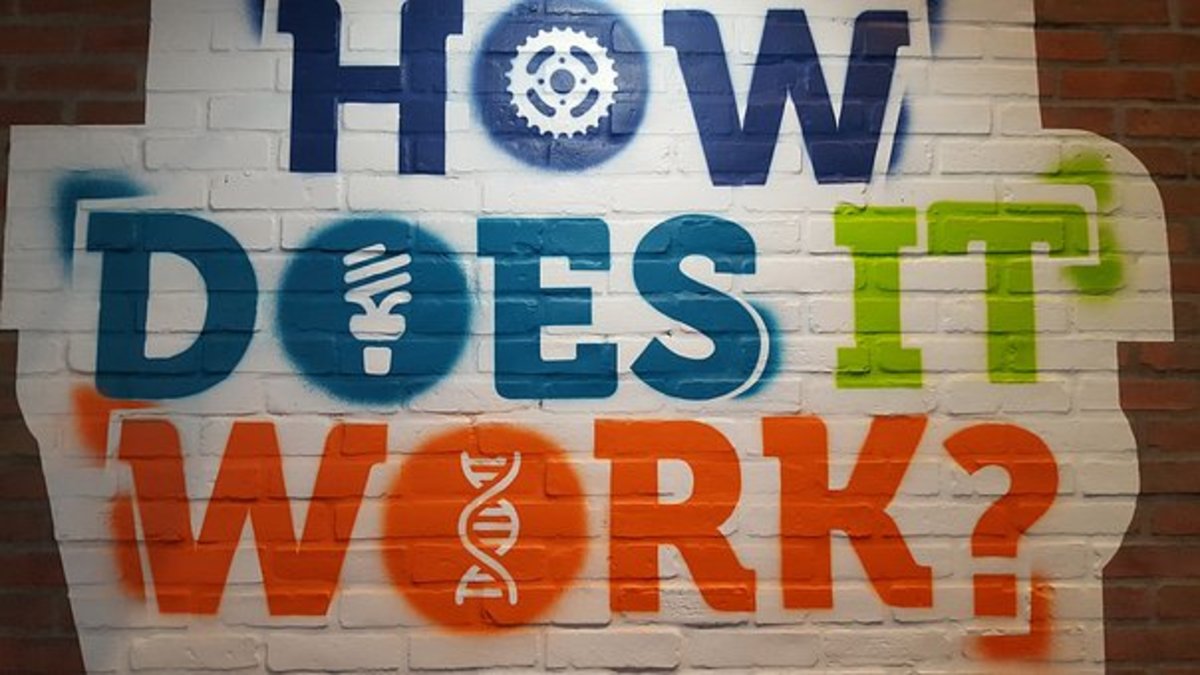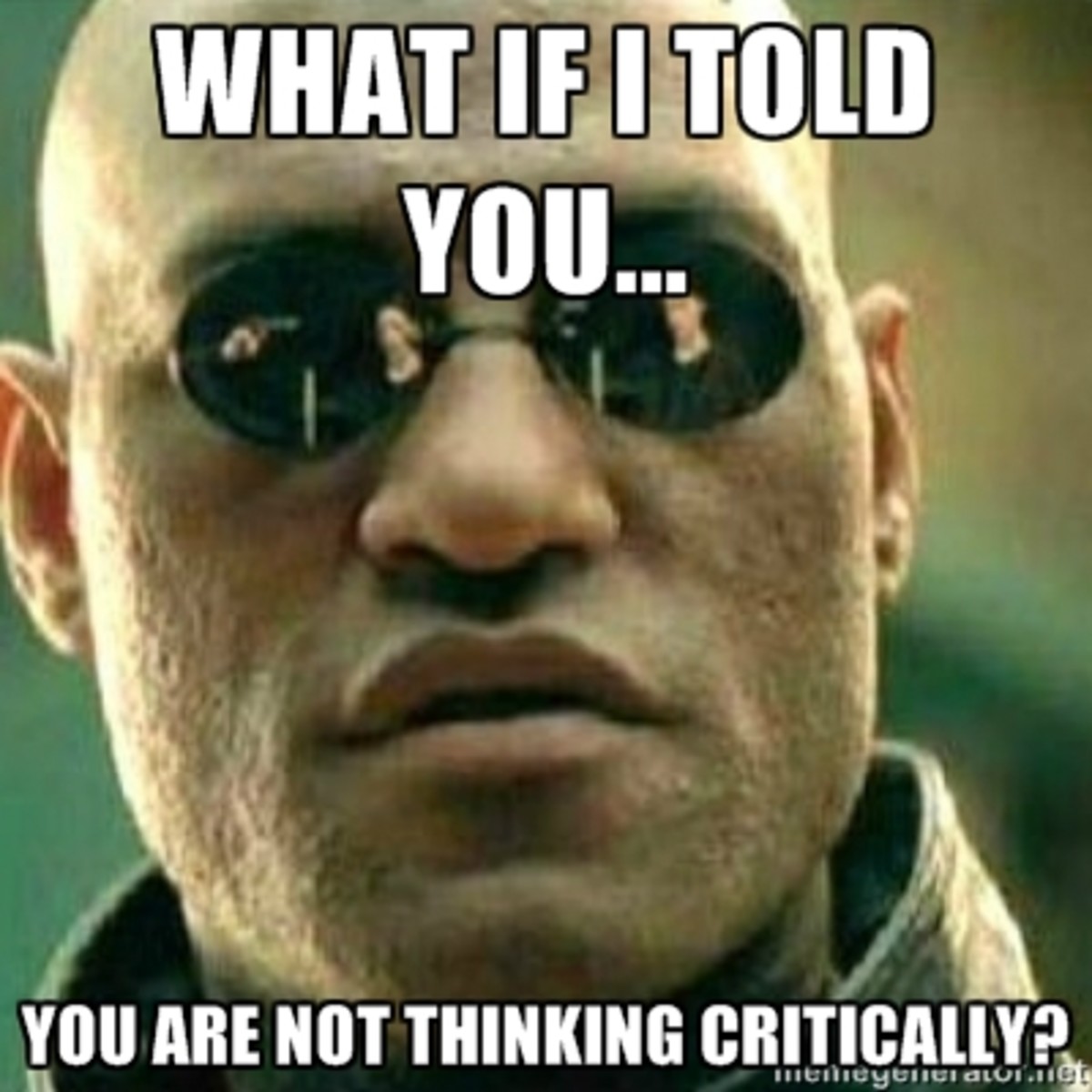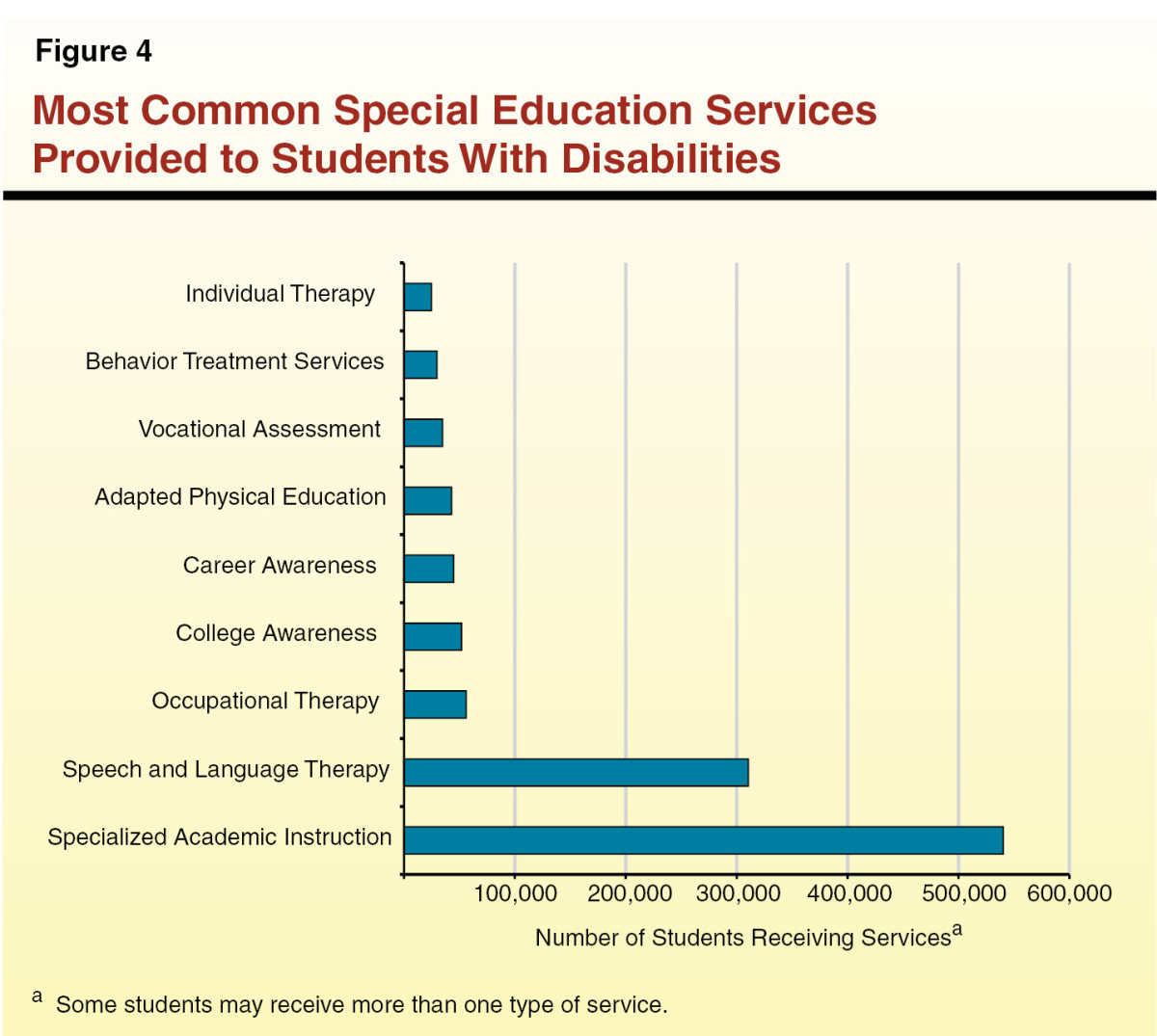Teaching Critical Thinking Skills
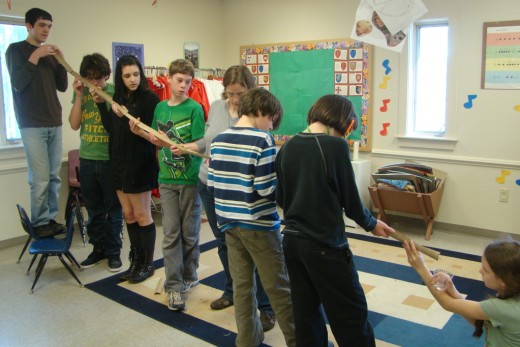
Why Teach Critical Thinking Skills?
Developing critical thinking skills in our youth should be one of our top goals in education. In today's world, facts are readily available by a quick search on a phone, tablet, or computer, yet being able to use that information to solve the problems of today and meet the challenges of the future requires something more than just knowing facts. Real life isn't a test where we memorize information and then spit it back out in the same way it was presented to us.
We have to be able to take information or materials and use them in different ways than they've been used before. After all, we don't solve new problems doing the same old things that brought us the problem in the first place! Yes, knowing facts is important, but so is being able to use those facts creatively to solve life's many challenges.
Being able to brainstorm new ideas, use information and materials in unique and creative ways, think divergently, and try new approaches are valuable skills to have while dealing with various challenges at work and at home. Being able to analyze the validity and plausibility of what we read or are told is another important skill.
Bloom's Taxonomy
These 6 levels of cognition range from the basic recall of facts (the bottom level) through increasingly higher levels of thinking until you reach evaluation at the top.
Evaluation
Synthesis
Analysis
Application
Comprehension
Knowledge
As parents and teachers, we need to ensure that we include learning activities from all levels, not just the basic knowledge level.
So How Can Teachers and Parents Teach Higher Level Critical Thinking Skills To Their Youth?
There are different ways to go about teaching critical thinking to our youth. Making use of more than one way of teaching these important skills is likely more effective than only engaging in one style since different activities teach or strengthen different critical thinking and problem solving skills.
Here are some ways of strengthening critical thinking skills in our youth:
- Provide Team Activities and Challenges. Asking students to work together in a team to complete challenges teaches our youth important critical thinking skills as well as how to work with others in dealing with problems and coming up with viable solutions. Working together as a team also teaches our youth communication skills. Knowing how to communicate effectively with others may be one of the most beneficial skills to learn! These skills may be very valuable to our youth as adults, both within the work place as well as in their personal lives. Being able to work well as part of a team, in a positive environment, is definitely an important real world skill!
- Engage Students In Philosophical Discussions. Participating in philosophical discussions (in a philosophy class, for example, or even just while driving together to the grocery store) taps into other critical thinking skills.
- Ask Open-Ended Questions. The types of questions we ask students within their content classes is one thing we can manipulate in order to get our youth to engage in more than just rote memorization. To enrich their minds, we can ask them to predict what will happen next, analyze information, look for symbols and deeper meanings, compare and contrast, relate information to their own experiences, apply what they've learned, and explain why something is the way it is or why we feel a certain way.
- Ask Students To Debate, Justify, Or Recommend. Other activities which help students take their thinking to a deeper level include asking them to explore various options, weigh the pros and cons, debate, justify, assess, formulate, and make recommendations.
- Encourage Them To Invent New Things. We can also ask students to devise or design new ways of doing something, invent or create things, and use their imaginations.
- Provide Puzzles for Students to Solve....Teaching Students Puzzle Solving Tips and Strategies, As Needed. Solving various types of puzzles, such as logic puzzles, sudokio, and other puzzles that require thinking skills are fun ways to strengthen our critical thinking skills! These puzzles can be done individually or with a partner.
- Encourage Students To Play Strategy Games. Playing strategy games, especially games where you plan the next several moves or turns in advance, is another fun way to strength one's critical thinking skills. Planning movies several steps in advance of when they actually carry them out encourages people to take into account what their opponents are likely to do based on what they do,
Hands-On Team Problem Solving Activities and Challenges
Hands-On Critical Thinking Activities / Learning Teamwork and Problem Solving
Teaching Creativity, Perseverance, Problem Solving, and Teamwork
Our homeschool co-op has offered a class in critical thinking for our middle school and high school students for the past two years. Prior to that, we had a critical thinking class for elementary aged youth. No matter their age, all the youth have responded enthusiastically to our critical thinking classes! They love the hands-on activities and the opportunity to work together in small teams to meet a variety of challenges!
I love the creativity, perseverance, and problem solving the youth exhibit, as well as the communication and teamwork skills they are learning! When given an assignment, no two teams solve it in exactly the same way. In fact, I am always amazed at just how creative they are! And they don't give up if their first idea doesn't work. These youth don't hesitate to redesign their creation or to try something new altogether if it doesn't work as they'd hoped the first time! Because most of the activities ask them to work with a partner or in a small group, the youth are also able to practice their communication skills and learn about how to work with others in a team.

Here's a photo taken a few years ago of our elementary aged youth in their critical thinking class. The activity was to build a bridge of a certain length out of straws. The challenging part was that the finished length of the bridge had to be longer than the length of the straws. Also, the quality of the bridge was an important factor, as teams competed to see who's finished bridge could hold the most weight!
Spaghetti and Marshmallow Bridges - How quickly can your team build a bridge tall enough to pass under?
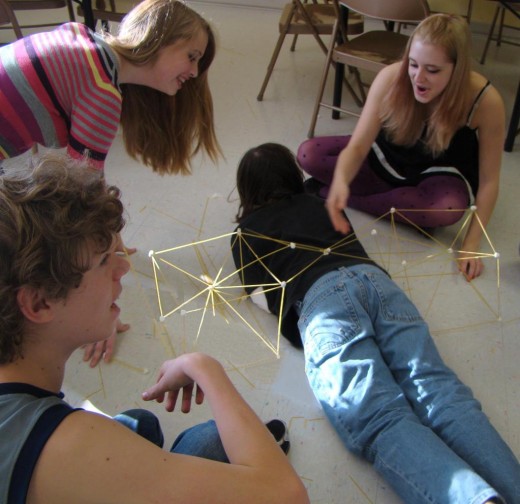
Can you make a bridge tall enough to pass under, using only marshmallows and spaghetti noodles? These middle and high school students can! They weren't given any instructions, diagrams, or hints. We simply handed each team the materials and asked them to build a structure tall enough that at least one team member could pass under. You might be surprised at the creativity the teams used in coming up with their own methods and solutions for meeting this challenge!
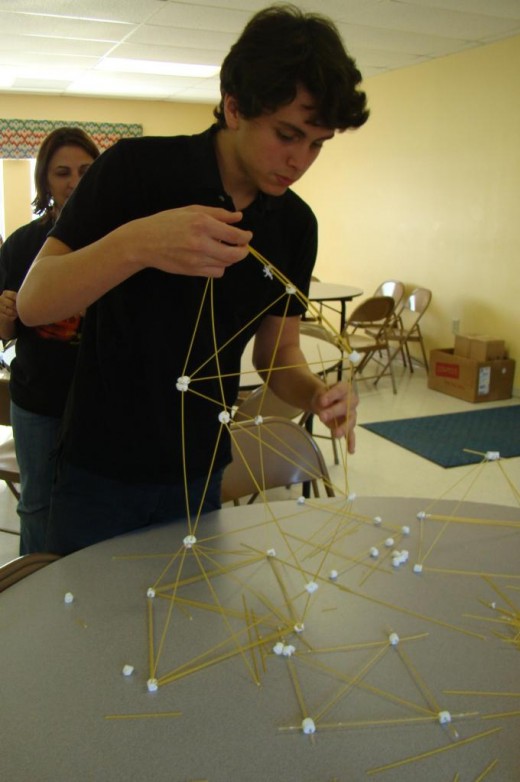
Another team choose to prepare their spaghetti and marshmallow bridge on top of the table and later move it to the floor. This team's bridge is taller which would seem to be an advantage, yet it also took them longer - and in fact they ran out of time. Making decisions such as how tall is necessary is all part of the learning!
Team Challenges: 170+ Group Activities - An excellent curriculum for teaching critical thinking skills and encouraging creativity!
This is one of the books our homeschool co-op has been using for our critical thinking class the past two years. It is full of hands-on challenges and activities which tap into a variety of critical thinking skills! In fact, there are so many activities in this book, even after two years of using this book once a week, we're nowhere near close to running out of new activities to try!
As you scroll up and down this webpage, you can see our youth engaging in some of the many challenges found in this book. As you look at them, please keep in mind that looking at the photographs doesn't really give you an adequate idea of the vast scope of activities described in the book. Many of the activities in the book couldn't really be captured in a photograph. This was true especially for the verbal activities, such as the verbal analogies and the brainstorming activities.

A Floating Boat That Can Hold Weight - A team challenge activity from the book: Team Challenges: 170+ Group Activities
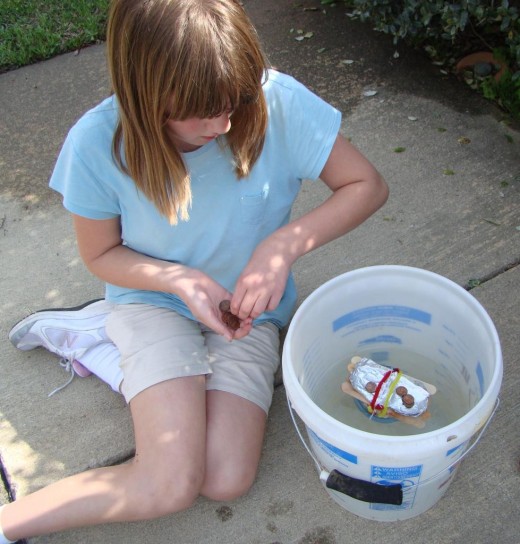
In the photo above, one of the youth in our homeschool co-op is testing her team's boat to see how many pennies it can hold. The youth were give some supplies (balloons, foil, popsicle sticks, etc.) and a limited amount of time, and asked to build a structure that could float and hold weight. The directions for this assignment were that they could only use the materials that had been given to them, but they could use them however they'd like. Every team's final creation looked very different from everyone else's. One team, for example, opted to blow their two balloons up so big, the boat was lodged in the pail and couldn't turn over even when weight was added. Or so they thought, anyway! One team wrapped the foil around the popsicle sticks, while another made a cup out of the foil to float the pennies in! One thing I always love about working with youth in a class of this nature is how very creative and inventive they can be!!
More Scenes From Our Critical Thinking Class - We also did improvisations, brainstorming, partner drawing, verbal analogies, and so many other activities!
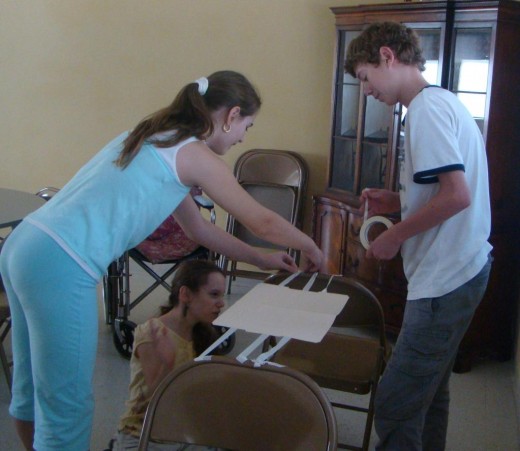
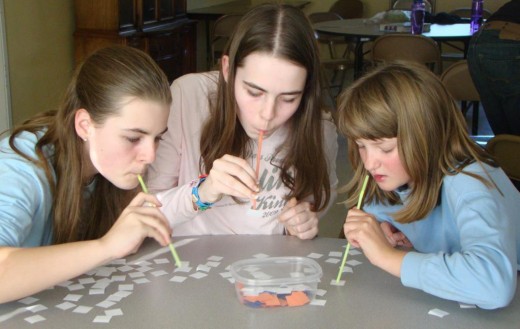
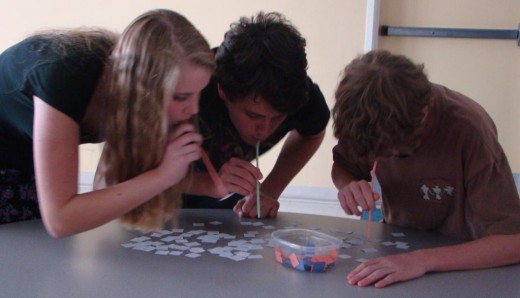
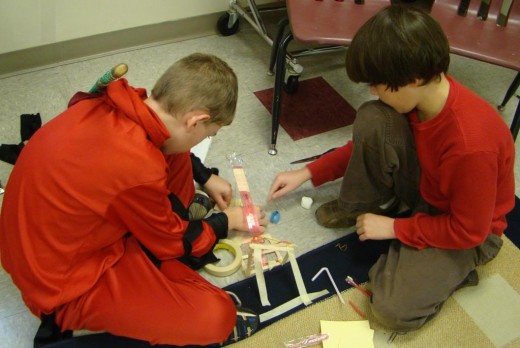
The photo above of two students building a catapult from an assortment of materials without any directions was taken on Halloween day, thus the Halloween costume! If you're interested in catapult making, you may enjoying visiting my article: Learning Physics, History, and More With Catapults!
Philosophical Discussions
Philosophical discussions - Deep philosophical discussions are another way to strengthen one's critical thinking abilities.
Not all of our critical thinking class is spent with the students working towards solving problems and mastering challenges. Some days the youth and teacher delve into philosophical discussions.

Tell us about yourself!
Tell us about yourself!
Teaching Critical Thinking in the Content Areas
Developing Critical Thinking Skills in the Content Areas
It does little good to offer a class specifically on critical thinking if we're not going to also encourage higher ordered thinking skills in the content area classes as well! Students must be encouraged to engage in higher ordered thinking within all of their classes. As mentioned near the top of this article, asking open-ended questions is one step we can take to create youth who are thinkers.
- A Model of Learning Objectives
This website gives the reader examples of the types of questions and activities we can give students to help them strengthen their critical thinking skills. At the top is a diagram. As you mouse over the diagram, sentences appear which give examples - Best Practices In Critical Thinking
This website provides tips on creating a thinking environment in the classroom.
Developing Critical Thinking Through Science

Using the internet to teach critical thinking

Making New Inventions
Helps Develop Higher Order Thinking
Invent New Things
Our homeschool co-op is going to be adding a new component to our critical thinking class in the fall: inventions. The youth will be learning about the process of inventing, as well as creating some inventions of their own! Here are some of the websites we may pull from in designing our classes.
- Nurturing the Inventive Spirit - A Handbook for Teachers
This website provides suggestions for activities to lead youth through the process of inventing. (Note: once you get to the website, it may appear as if the webpage has not fully loaded. Simply scroll down the page some!) - What Can I Invent That Will Solve a Problem Encountered in Everyday Life?
This is an 11 day long unit on learning about and then creating inventions. It's aimed at 8th graders, but could probably be adapted to other grade levels.
Could you be an inventor? (Or maybe you already are one?)
Have you ever dreamed up something you'd like to invent?
Critical Thinking Workbooks and Strategy Games
Brain Teasers, Logic Puzzles, Math Puzzles, and others
Problem Solving and Comprehension - How to Sharpen Your Thinking Skills and Increase Your IQ

Critical Thinking Workbooks - Thinking Skills - for 1st through 6th graders

Do you prefer puzzles or strategy games?
Also, what are your favorite types of puzzles or strategy games?
The Settlers of Catan - Highly rated, award-winning game of strategy
I gave this game to my husband for his birthday a couple of weeks ago. My daughter and her boyfriend, both college students, were at our house visiting and let out a cheer when they saw the game! They' had already played it several times with a friend of theirs who also owns a copy. Last night we had a 12 year old visiting, and he too was thrilled to see the game. He said his family has it and it's one of his favorites!
My family have only had the opportunity to play it once so far, but we all love it too! There is a lot of strategy throughout the game, with some crucial bits of strategy coming into play in the first couple of turns. Like all good strategy games, planning your moves several turns in advance is very advantageous!
I can't wait to play again, making use of what I learned in the first game!

Deluxe Wooden Chess, Checkers and Backgammon Set
Chess, Checkers, and Backgammon are all wonderful strategy games!
Blokus Classics Game - Blokus has won over 20 awards, including a Mensa award!
Blokus helps to develop spatial perception and logic. Like all good strategy games, you find yourself planning your moves several turns in advance.

More Strategy Games - for strengthening your critical thinking skills!


